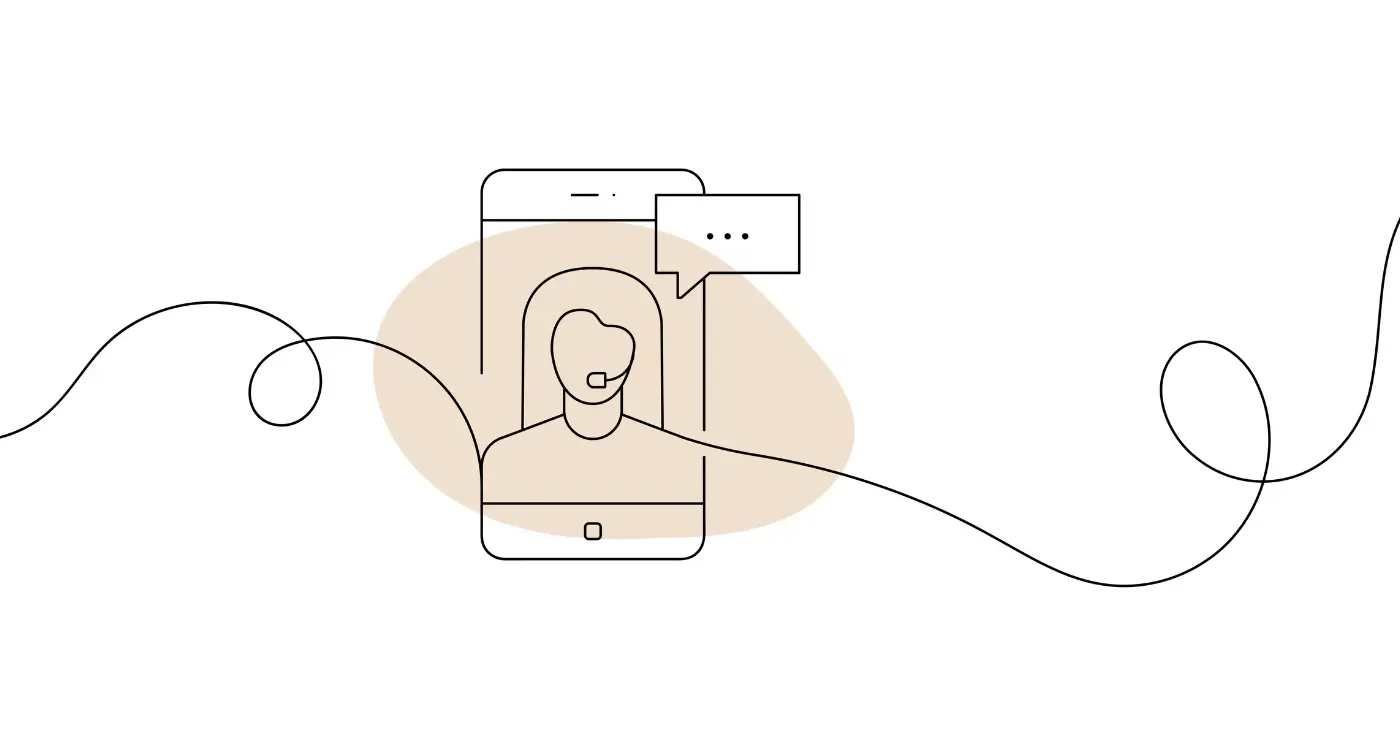How Much Does A Farm App For Modern Agriculture Cost to Build?
Modern farmers manage more data than most tech companies. Between soil sensors, weather monitoring, crop tracking, and equipment maintenance, today's agricultural operations generate massive amounts of information that needs to be processed, analysed, and acted upon quickly. This digital transformation has made farm management apps absolutely necessary for staying competitive—but building one isn't cheap.
The AgriTech sector has exploded in recent years, with farm management applications becoming the backbone of precision agriculture. These aren't simple apps that track your daily tasks; they're sophisticated platforms that integrate with IoT devices, satellite imagery, and complex databases to help farmers make data-driven decisions about everything from planting schedules to harvest timing.
The cost of building a farm management app can range from £50,000 for a basic solution to over £500,000 for a comprehensive enterprise platform
But here's what makes AgriTech development particularly challenging—and expensive. You're not just building a standard mobile app; you're creating a system that needs to work reliably in harsh outdoor conditions, integrate with specialized agricultural hardware, and handle the unique workflows that farmers depend on. The development cost varies dramatically based on features, complexity, and the specific agricultural processes you're trying to digitize.
What Goes Into Building a Farm Management App
Building a farm management app isn't like creating a simple calculator or photo editor—there's quite a bit more complexity involved. You need to think about how farmers actually work and what problems they face every day. Most farmers juggle multiple tasks: tracking livestock, monitoring crop health, managing equipment, and keeping financial records. Your app needs to handle all of this without making their lives more complicated.
The technical side gets interesting when you consider that farms often have patchy internet connections. Your app can't just assume it'll always be online. You'll need offline functionality, data synchronisation, and probably some way to connect with existing farm equipment through APIs or IoT sensors. Weather data integration is almost always a must-have feature.
Core Development Components
Database design becomes quite involved because you're dealing with different types of data—seasonal records, livestock histories, equipment maintenance logs, and financial transactions. The user interface needs to work well on tablets (farmers love their rugged tablets) and phones, often with gloves on. Security is another big consideration since you're handling sensitive business data.
Don't forget about compliance requirements either. Depending on your target market, you might need to meet agricultural reporting standards or data protection regulations. Testing becomes more complex too—you can't just test in an office environment; you need to understand how the app performs in real farm conditions.
The Main Features That Drive Development Cost
After building dozens of AgriTech apps over the years, I can tell you that certain features will make your budget either smile or cry. The reality is that farm management apps aren't your typical social media platform—they need to handle complex data from multiple sources and present it in ways that actually help farmers make better decisions.
GPS tracking and field mapping capabilities are probably the biggest cost drivers I see. These features require sophisticated algorithms to process location data accurately, especially when you're dealing with large parcels of land. Then there's weather integration, which sounds simple but involves connecting to multiple weather APIs and presenting forecasts in a format that's useful for agricultural planning.
High-Impact Features and Their Cost Implications
- Real-time sensor data collection and analysis
- Crop monitoring with satellite imagery integration
- Equipment tracking and maintenance scheduling
- Financial reporting and compliance documentation
- Multi-user access with different permission levels
- Offline functionality for remote areas
The feature that catches most people off guard is offline capability. Farms often have patchy internet coverage, so your app needs to work without a connection and sync data when connectivity returns. This doubles the complexity of your development work.
Start with core features like basic record keeping and field mapping, then add advanced features like satellite imagery in later versions. This approach keeps initial costs manageable whilst giving you something to test with real users.
How App Complexity Affects Your Budget
The complexity of your farm management app is probably the biggest factor that'll determine your final bill. I've worked on everything from simple crop tracking apps to comprehensive platforms that manage everything from soil analysis to automated irrigation systems—and trust me, the price difference is massive.
Simple Apps Keep Costs Down
A basic farm management app might just track your crops, record harvest dates, and store some notes about weather conditions. These straightforward apps typically cost between £15,000 and £30,000 because they don't need fancy features or complicated backend systems. You're looking at standard user interfaces, basic data storage, and maybe some simple reporting.
Complex Features Drive Prices Up
Now, if you want real-time sensor integration, GPS field mapping, predictive analytics, or connections to multiple third-party systems, you're entering complex territory. These apps can easily cost £50,000 to £150,000 or more because they require specialist knowledge, custom APIs, and extensive testing. The development time shoots up when you need features like drone integration, machine learning algorithms, or multi-user permission systems.
The key is being honest about what you actually need right now versus what would be nice to have. You can always add complex features later once your core app is working well and generating value for your farm operations.
Choosing Between Different Development Approaches
When it comes to building your farm management app, you've got three main paths to choose from—and each one will affect your AgriTech budget differently. Native apps are built separately for iOS and Android, which means double the development work but the best performance. Hybrid apps use one codebase for both platforms, cutting costs but sometimes sacrificing speed. Then there's web apps, which run in browsers and are the cheapest option initially.
Native Development: The Premium Choice
For farm management apps that need to handle GPS tracking, camera integration, and offline data sync, native development often makes the most sense. Yes, it costs more upfront—sometimes 60-80% more than hybrid options—but you get apps that work smoothly with device hardware. This matters when farmers are out in fields with patchy internet connections.
The choice between native and hybrid development can make or break your farm management app's success in real-world conditions
Hybrid and Web Solutions
Hybrid frameworks like React Native or Flutter can reduce your development cost by 30-50% since you're building once for both platforms. They work well for simpler farm management features like record keeping or basic reporting. Web apps are cheapest but limited—they can't access device features farmers need most. The key is matching your approach to your app's complexity and your budget constraints.
Understanding Timeline and Its Impact on Cost
Time is money—and nowhere is this more true than in app development. When you're building a farm management app, the timeline you choose will directly affect how much you end up paying. It's one of those things that seems obvious once you know it, but catches many people off guard.
If you want your app built quickly, you'll need more developers working on it at the same time. Think of it like harvesting a field—you can do it with one person over several weeks, or bring in a whole team to get it done in days. More people means higher costs, but you get your app sooner.
Rush Jobs Cost More
I've seen clients who suddenly need their app "yesterday" because they've got a trade show coming up or a funding deadline. These rush jobs can cost 30-50% more than a standard timeline. Developers might need to work overtime, and you often can't negotiate the best rates when you're in a hurry.
Longer Timelines Have Hidden Costs Too
On the flip side, dragging a project out too long isn't always cheaper. Technology changes, team members might move on to other projects, and you could end up paying for maintenance of half-finished features. The sweet spot is usually somewhere in the middle—not rushed, but not dragging on forever either.
Hidden Costs and Budget Planning Tips
Building a farm management app always costs more than you first think. I've seen this countless times—clients come to us with a budget that covers the basics, then discover there's a whole world of additional expenses they hadn't considered. These hidden costs can easily add 20-30% to your original estimate if you're not careful.
The biggest surprise for most people is ongoing maintenance costs. Your app won't just magically keep working forever; it needs regular updates, bug fixes, and security patches. Plan for spending about 15-20% of your initial development cost each year just keeping things running smoothly.
Common Hidden Costs in AgriTech Apps
- Third-party API fees for weather data, satellite imagery, or market prices
- Cloud storage and database hosting costs that grow with your user base
- App store fees and annual developer programme memberships
- Legal compliance costs for data protection regulations
- Marketing and user acquisition expenses
- Staff training and technical support resources
Smart budget planning means adding a 25-30% contingency fund to your initial estimate. This buffer will save you from nasty surprises down the line. Also, consider phased development—start with core features and add advanced functionality later as revenue grows.
Always ask your development team for a detailed breakdown of ongoing costs before signing any contracts. Knowing what you'll pay monthly for hosting, APIs, and maintenance helps you plan realistic budgets for the long term.
Real Examples of Farm Management App Development Costs
I've worked on farm management apps with budgets ranging from £25,000 to £150,000, and the price differences always come down to features and complexity. Let me share some real numbers from projects we've completed—though I've changed the names for obvious reasons.
Basic Farm Record Keeping Apps
A simple crop tracking app for a small farming cooperative cost around £35,000. This included basic field mapping, planting schedules, and harvest records. Nothing fancy, but it did the job perfectly for their 200-acre operation.
Advanced Multi-Feature Platforms
On the other end, we built a comprehensive platform for a large agricultural consultancy that cost £125,000. This beast included weather integration, soil analysis tools, equipment tracking, financial reporting, and multi-user access with different permission levels.
The middle ground seems to be around £60,000-£80,000 for most farm management apps. These typically include livestock tracking, basic weather data, inventory management, and simple reporting features.
| App Type | Key Features | Development Cost |
|---|---|---|
| Basic Tracker | Field mapping, crop records | £25,000-£40,000 |
| Standard Platform | Livestock, weather, inventory | £60,000-£80,000 |
| Enterprise Solution | Full integration, analytics, multi-user | £100,000+ |
What's interesting is that the most expensive features aren't always the most complex—they're usually the ones that need to connect with existing farm equipment or third-party services. This is where understanding your highest value data becomes crucial for budget planning.
Conclusion
Building a farm management app isn't cheap—I won't sugarcoat that for you. We've covered a lot of ground here, from basic features that'll cost you around £15,000 to complex AgriTech solutions that can easily hit £100,000 or more. The truth is, there's no magic number that fits every project.
What I've learned from working with agricultural clients over the years is that the farmers who get the best value are those who start with a clear understanding of their actual needs. Not what they think would be nice to have, but what they genuinely need to solve real problems on their farm. That GPS tracking system might look impressive, but if you're managing a small organic farm, you might be better off investing that budget in a solid crop planning feature instead.
The development approach you choose—native, hybrid, or web-based—will significantly impact your budget. So will your timeline, the complexity of features, and those hidden costs we talked about. My advice? Start with the basics, get your app into farmers' hands, and build from there. The agricultural technology market is growing rapidly, but successful farm management apps are built on solid foundations, not flashy features that nobody uses.
Share this
Subscribe To Our Learning Centre
You May Also Like
These Related Guides

How Much Does It Cost to Set up Customer Support for a Mobile App?

How Much Does It Really Cost to Build a Fintech App?



